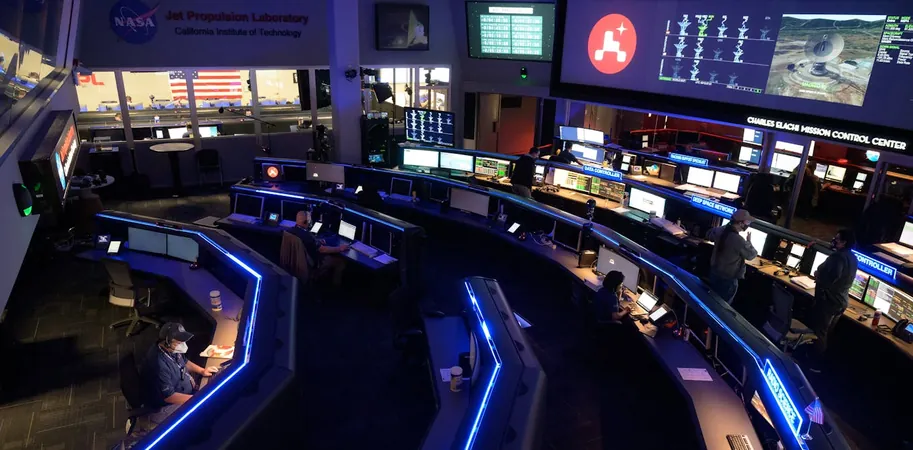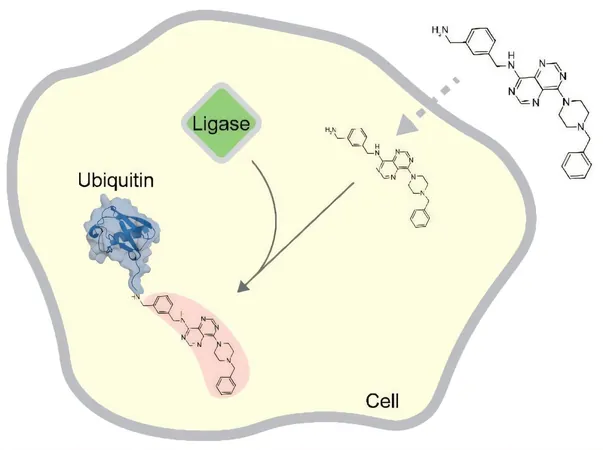
Unveiling Mars: How Perseverance’s Tools Are Unraveling Ancient Secrets of Life
2025-09-17
Author: Emma
A Groundbreaking Find on Mars
NASA's relentless quest for ancient life on Mars has just received a thrilling update. On September 10, 2025, scientists released findings from the Perseverance rover's exploration of a captivating rock outcrop known as Bright Angel, positioned at the rim of the Jezero Crater. This site is distinguished by its light-colored rocks adorned with eye-catching mineral nodules and vibrant, leopard-print-like patterns.
Using a suite of five advanced scientific instruments, the team concluded that these intriguing nodules may have emerged from processes potentially linked to microorganisms. While this doesn’t provide direct proof of extraterrestrial life, it’s an exciting lead that planetary scientists are eager to investigate further.
Experiencing Mars: The Virtual Connection
To fully grasp how such discoveries are made, it's essential to understand the process of data analysis conducted by scientists. It’s akin to donning a virtual reality headset, where one’s surroundings are replaced by an immersive experience. For Mars scientists, rover data acts as this immersive portal, transporting them to the Martian landscape.
Clever developers have created virtual Mars environments, yet much of the day-to-day scientific work is done by interpreting complex numerical data displayed in graphs and plots. The sophisticated sensors onboard the rovers provide data that far transcends basic human perception.
The Robotic Arsenal: Tools of Discovery
Perseverance is equipped with a formidable array of instruments that work in tandem with machine learning algorithms to decode the strange rock formations found at Beaver Falls. Let’s take a closer look.
- **Robotic Hands**: Equipped with capabilities to clear dust and abrade rock surfaces, these tools ensure the rover collects pristine samples for analysis.
- **Cameras**: Housing 19 cameras for navigation and scientific purposes, five specialized cameras captured details invisible to the naked eye, revealing that Bright Angel is comprised of mudstone, a sedimentary rock indicating past aquatic environments.
- **Spectrometers**: Instruments like SuperCam and SHERLOC scan for organics and chemicals, revealing how rocks reflect and emit light. Their findings hinted at water incorporation in the rock’s structure and traces of organic molecules, crucial elements for life.
- **Subsurface Radar**: RIMFAX utilizes radio waves to unveil layered rock structures beneath the surface, indicating ancient river activity and better habitats for potential microbes.
- **X-ray Chemistry**: The PIXL device bombards rock with X-rays to determine elemental composition. Notably, it discovered that the leopard-like patterns at Beaver Falls differ chemically from surrounding rock, resembling Earth’s microbial-induced formations.
Navigating the Unknown: The Challenge Ahead
Yet, amidst this technological marvel, uncertainty looms. The results from Perseverance remain suggestive rather than definitive regarding past life on Mars. While mass spectrometers could confirm biological activity, they are currently too delicate for Mars endeavors.
Fortunately, Perseverance has meticulously collected and sealed rock core samples, aiming to eventually send them back to Earth for extensive analysis, which could provide clearer answers.
The Future of Mars Exploration at Stake
This remarkable achievement is a highlight of decades of NASA investment in Mars exploration and the innovations brought forth by dedicated engineering teams. However, recent proposals to cut NASA’s science funding by 47% may threaten ongoing missions like Perseverance and the ambitious Mars sample return campaign.
Perseverance isn’t merely a machine; it embodies humanity's connection to another world. These robotic explorers and the dedicated NASA science programs are crucial in our quest to uncover the mysteries of the universe and the existence of life beyond our planet.









 Brasil (PT)
Brasil (PT)
 Canada (EN)
Canada (EN)
 Chile (ES)
Chile (ES)
 Česko (CS)
Česko (CS)
 대한민국 (KO)
대한민국 (KO)
 España (ES)
España (ES)
 France (FR)
France (FR)
 Hong Kong (EN)
Hong Kong (EN)
 Italia (IT)
Italia (IT)
 日本 (JA)
日本 (JA)
 Magyarország (HU)
Magyarország (HU)
 Norge (NO)
Norge (NO)
 Polska (PL)
Polska (PL)
 Schweiz (DE)
Schweiz (DE)
 Singapore (EN)
Singapore (EN)
 Sverige (SV)
Sverige (SV)
 Suomi (FI)
Suomi (FI)
 Türkiye (TR)
Türkiye (TR)
 الإمارات العربية المتحدة (AR)
الإمارات العربية المتحدة (AR)